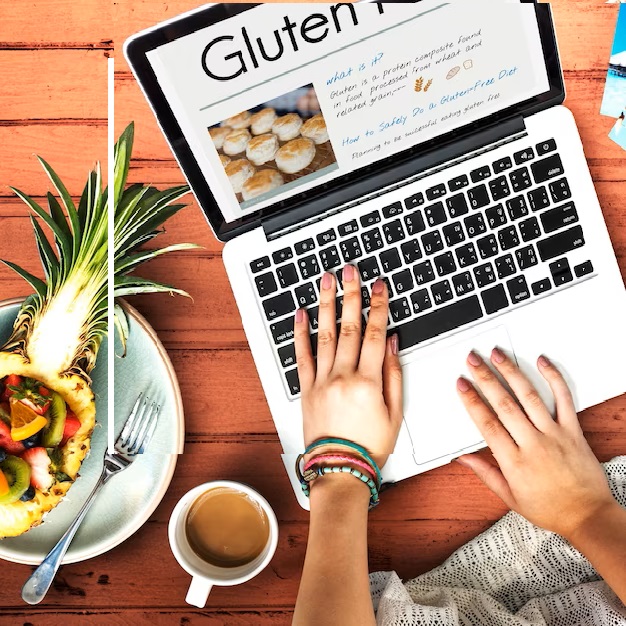
Creating a gluten-free kitchen is a challenge but with certain strategies to prevent cross-contamination and ensure the safety of gluten-sensitive individuals. Here are some strategies to consider:
Separate gluten-free and gluten-containing items: Designate specific areas in your kitchen to store gluten-free ingredients and products separately from those containing gluten. This helps reduce the risk of cross-contamination. Consider using different shelves, cabinets, or containers to keep gluten-free items clearly separated.
Use separate kitchen tools and utensils: Have dedicated kitchen tools and utensils for gluten-free cooking and baking. This includes cutting boards, baking sheets, mixing bowls, colanders, and toasters. Avoid using wooden utensils, as they can retain gluten particles even after cleaning. Using color-coded or labeled utensils can help differentiate between gluten-free and gluten-containing items.
Clean surfaces thoroughly: Regularly clean countertops, cutting boards, and any kitchen surfaces that come into contact with gluten. Use separate sponges or cleaning cloths for gluten-free and gluten-containing areas to prevent cross-contamination. Be meticulous in cleaning kitchen appliances like blenders or food processors to ensure no gluten residue remains.
Minimize airborne cross-contamination: Gluten particles can become airborne during food preparation, potentially landing on gluten-free surfaces or foods. To minimize this risk, consider the following steps:
Use a separate toaster for gluten-free bread or invest in a toaster with removable and washable crumb trays.
Avoid flour or baking mixes in the air when handling gluten-containing products.
Keep gluten-free ingredients covered or stored away from areas where gluten-containing flours or breadcrumbs are used.
Label and store ingredients properly: Clearly label all gluten-free ingredients to prevent mix-ups. Store gluten-free flours, grains, and other pantry staples in airtight containers or resealable bags to avoid cross-contamination. Labeling can also help other household members identify gluten-free items easily.
Communicate with household members or roommates: If you share your kitchen with others, it\\'s essential to educate them about gluten-free practices and the importance of avoiding cross-contamination. Encourage open communication and cooperation to maintain a gluten-free environment.
Be cautious with condiments and spreads: Shared condiments like butter, peanut butter, or jams can become contaminated with gluten if used with gluten-containing bread or other products. To prevent this, consider using squeeze bottles or individual containers for condiments, or use dedicated gluten-free versions.
Be mindful of bulk bins and shared equipment: When purchasing gluten-free grains, flours, or other ingredients from bulk bins, ensure that they are stored separately from gluten-containing items. Additionally, be cautious when using shared equipment, such as coffee grinders or blenders, as they may retain gluten residues.
Educate yourself and others: Stay informed about gluten-free practices and the ingredients that contain gluten. Share your knowledge with household members, friends, or guests who may use your kitchen. Encourage them to be mindful of cross-contamination risks and follow appropriate precautions.
Remember, while these strategies can help minimize cross-contamination, it\\'s crucial for individuals with celiac disease or severe gluten sensitivity to consult with healthcare professionals for guidance on managing their condition effectively.

Comments